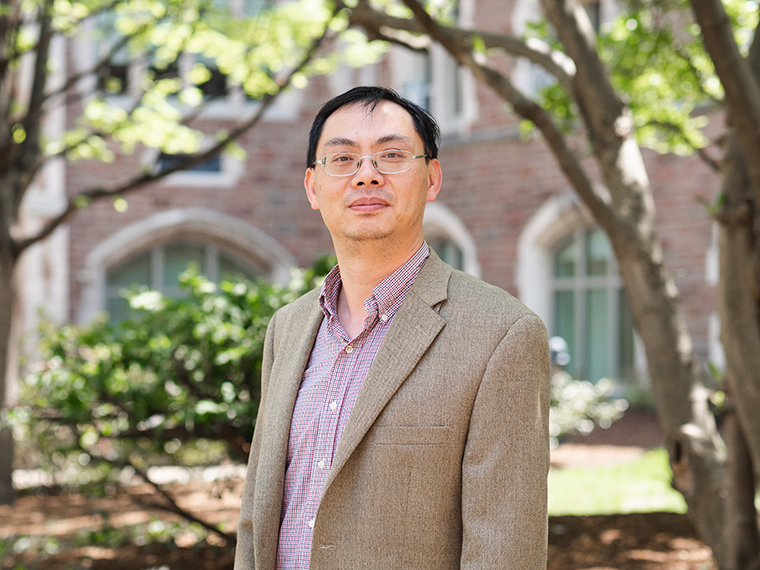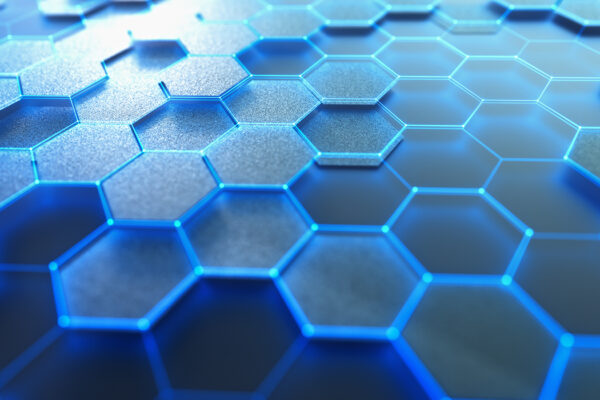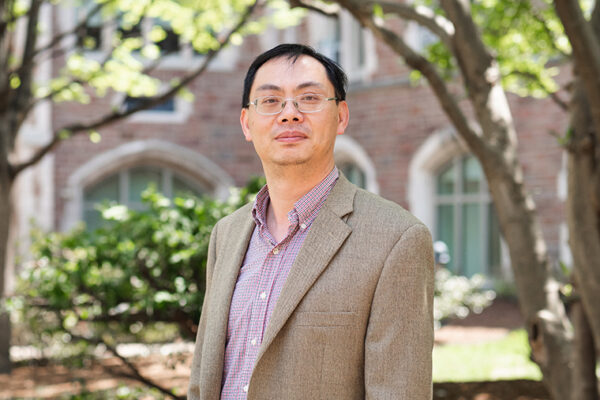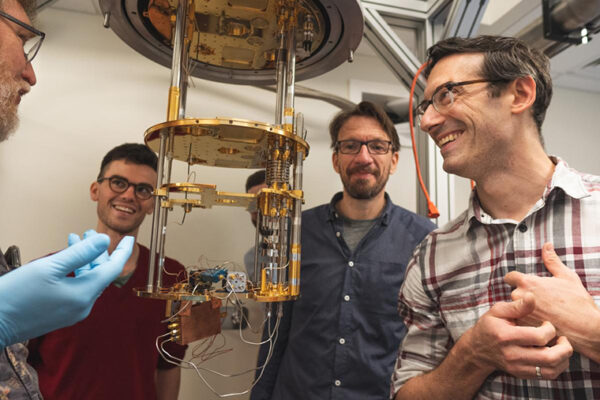A team led by physicists at Washington University in St. Louis received a four-year $1.8 million grant from the National Science Foundation for a collaborative project to identify new quantum materials, which could lead to technological innovations.
The research is titled “Accelerated Discovery of Artificial Multiferroics with Enhanced Magnetoelectric Coupling.” Li Yang, professor of physics in Arts & Sciences, and collaborators will conduct large-scale simulations to identify candidates for artificial multiferroics, a new type of quantum materials. These materials integrate two-dimensional van der Waals magnets with ferroelectrics.

“New materials lay the foundation for technology innovations,” Yang said. “In addition to understanding the fundamental interface physics of two different quantum phenomena — that is, electric and magnetic polarizations — we expect that the new materials we discover can lead to technological innovations, such as voltage-controlled magnetism and memory devices, which are faster, more compact and power-saving.”
The research grant will fund work to develop new materials that simultaneously exhibit electric and magnetic orders. Such materials could be useful for low-power nanoelectronics because they could control magnetism by electric field, or vice versa.
Unfortunately, magnetoelectric coupling in single-phase materials is typically weak because electricity and magnetism come from different quantum origins. Finding new materials with a strong magnetoelectric coupling at room temperature has been a challenge for condensed matter physicists and engineers for decades.
Yang is the principal investigator for the new effort and will spearhead the computational search for new materials, using machine learning techniques. Co-investigators Xia Hong from the University of Nebraska-Lincoln and Keji Lai and Xiaoqin Li from the University of Texas at Austin will lead material synthesis, characterizations and device fabrication.
The team already has identified more than 100 candidate structures for the new quantum materials.
At Washington University, Yang has been working on the theory of ferromagnetism and electric polarizations of nanoscale materials since 2015. His laboratory’s early works include the predictions of the first giant piezoelectric effect in 2D materials; room-temperature ultra-thin ferroelectric materials; and topological magnetic vortices.
More recently, Yang has turned to the interface of artificial materials. In 2020, he and his team predicted the enhanced magnetoelectric coupling in the interface of artificial structures made by magnetic chromium triiodide (CrI3) and ferroelectric Sc2CO2.
Read more on the Yang laboratory’s website.



